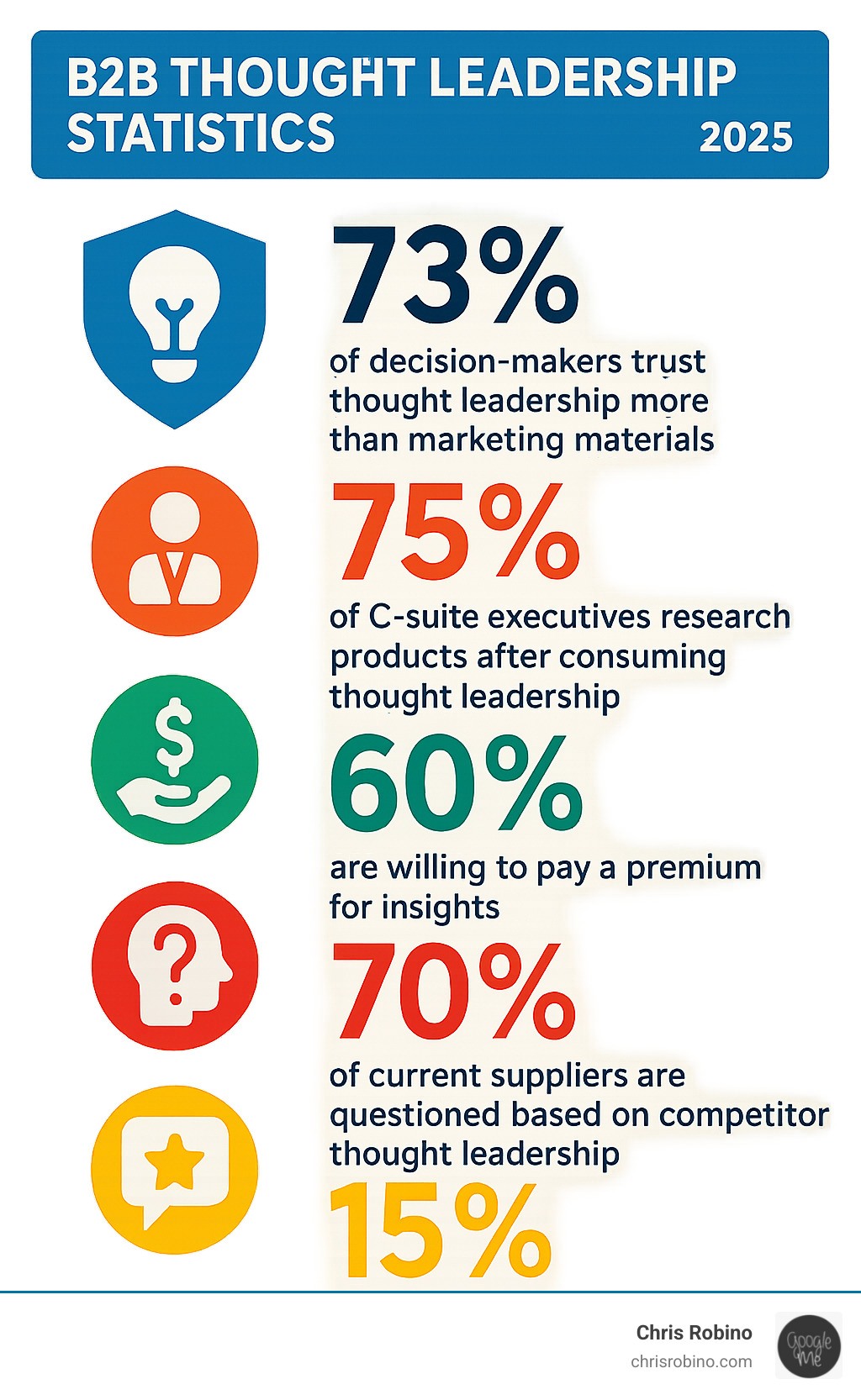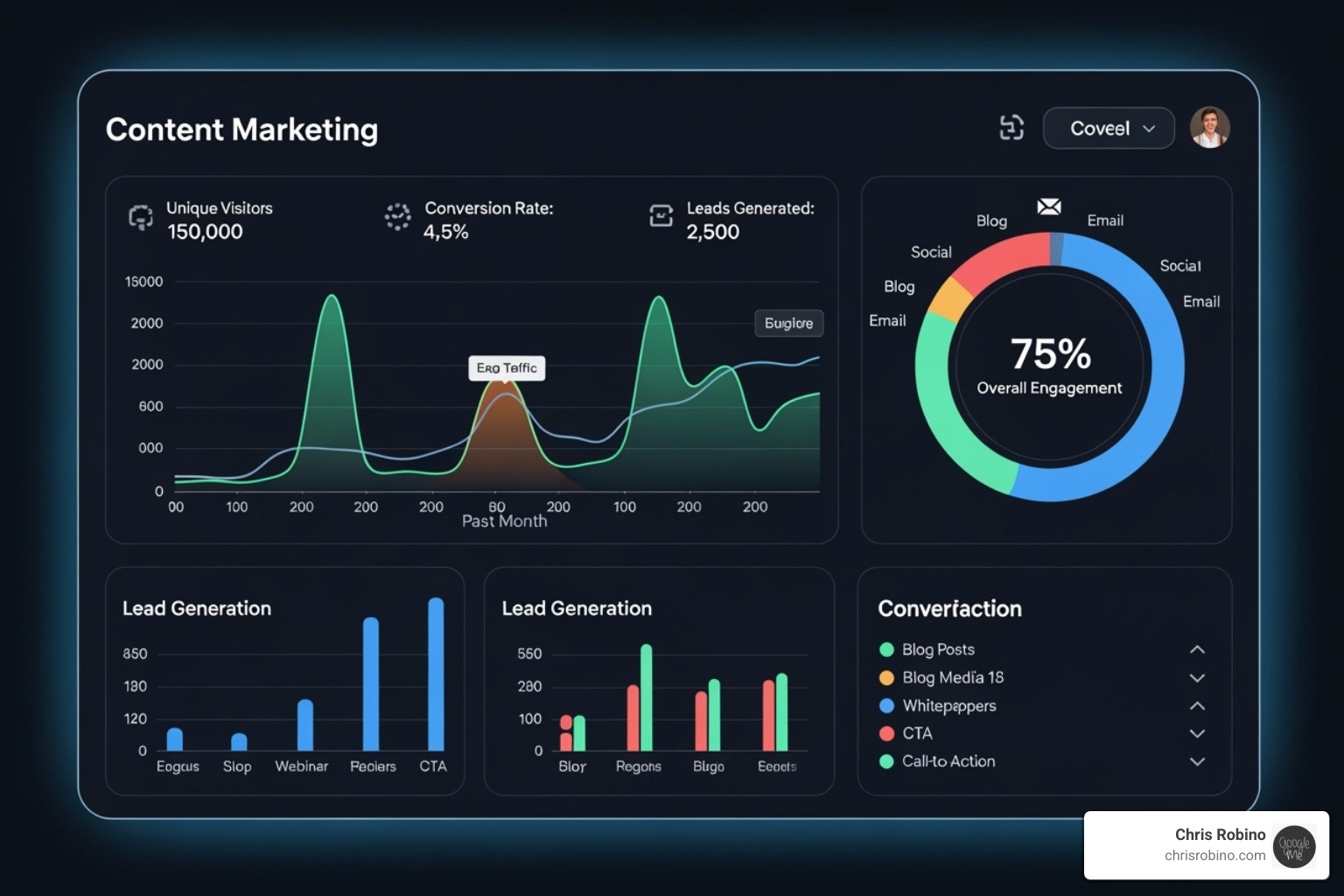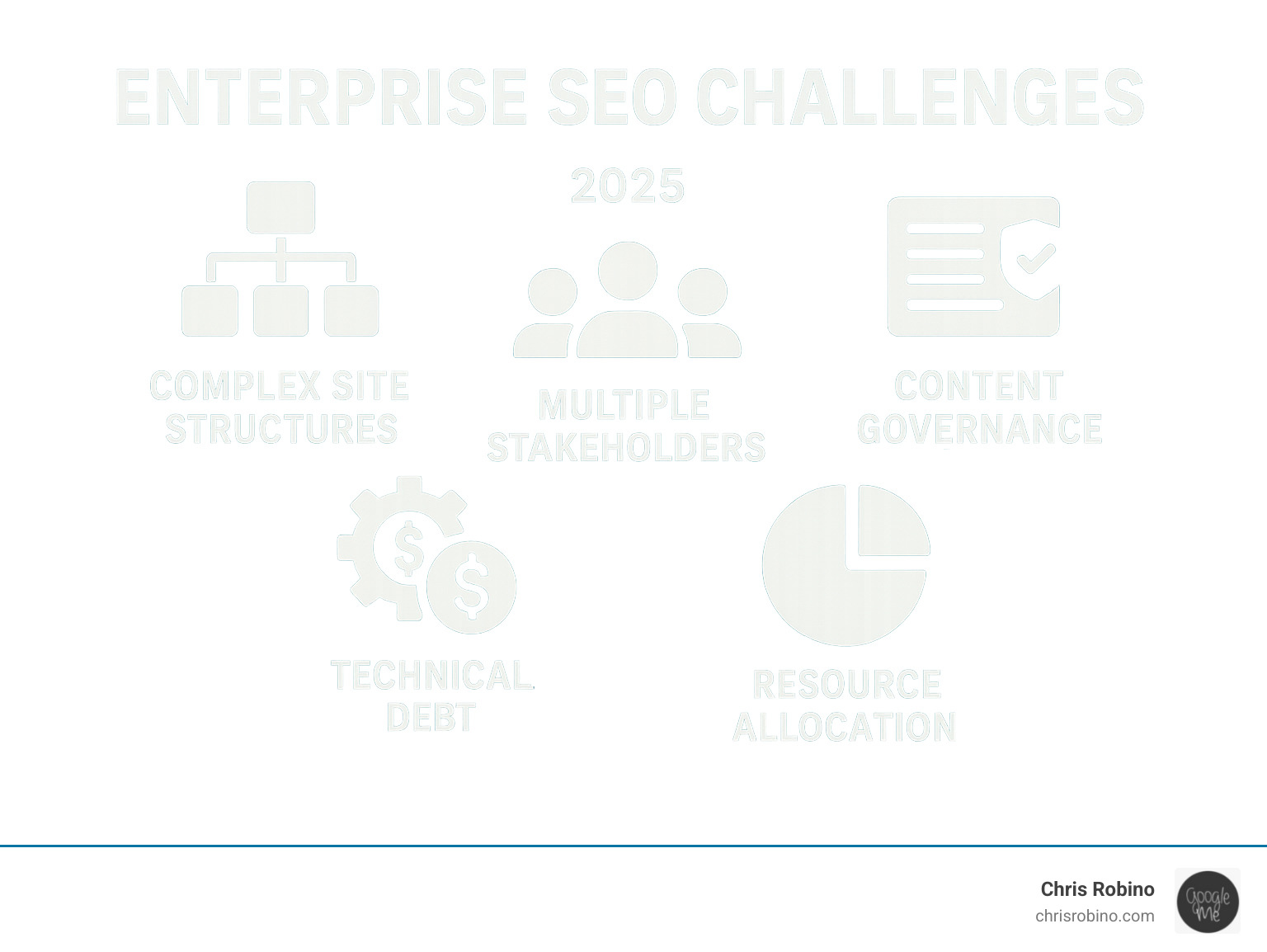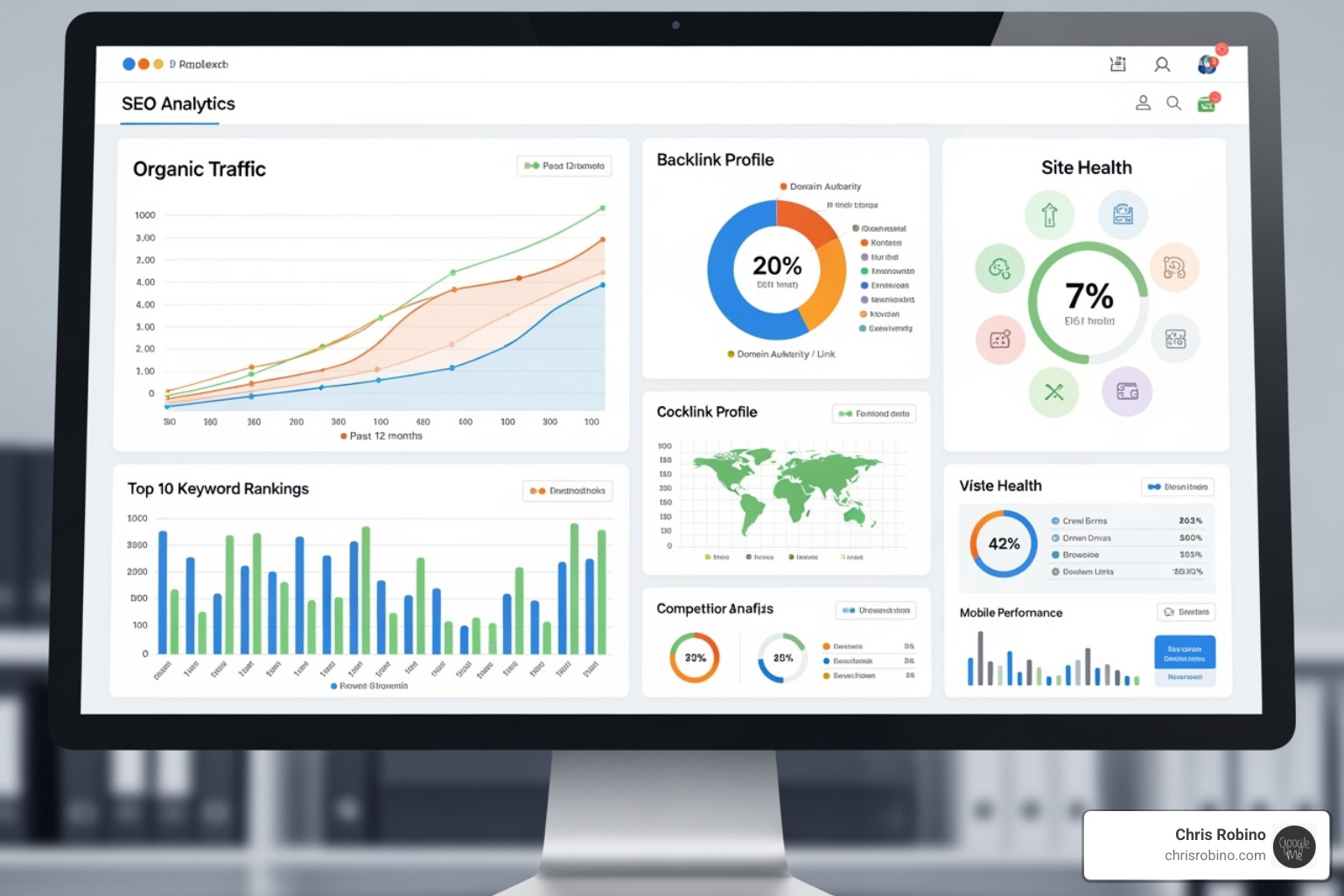Why B2B Thought Leadership is Your Most Powerful Marketing Tool
B2B thought leadership content is the practice of creating authoritative, insight-driven material that positions your company as a trusted expert. Unlike traditional marketing, it focuses on educating prospects and solving real business problems, not just promoting products.
At its core, thought leadership shares new ideas that benefit others, leading with objective data to build a case. This approach is crucial in B2B, where long sales cycles and complex decisions make trust the ultimate currency. The numbers tell a compelling story: 73% of decision-makers trust thought leadership more than marketing materials, and 75% of C-suite executives have researched new products after reading quality content.
The challenge? Only 15% of buyers rate the thought leadership they read as “very good” or “excellent.” Most content is generic or self-promotional. This creates a massive opportunity for companies that get it right by reaching the 95% of B2B buyers who aren’t actively shopping but are learning about their problems.

The Key Benefits for Your Business
High-quality B2B thought leadership content drives tangible business growth:
- Increased Trust and Credibility: Build trust with decision-makers and improve brand perception.
- Higher Quality Leads: Make decision-makers more receptive to your outreach, as 90% are more likely to engage with companies known for quality thought leadership.
- Premium Pricing Justification: 60% of B2B leaders are willing to pay a premium for organizations that provide valuable insights.
- Shortened Sales Funnel: Pre-educate prospects, moving them down the funnel before they even talk to sales.
- Improved Customer Retention: Reassure existing customers and defend against competitors. According to recent industry research, this strategy can deliver a significant ROI.
A Practical Guide to Creating B2B Thought Leadership Content
Creating powerful B2B thought leadership content requires a strategic process focused on quality over quantity. Every piece should serve a purpose and contribute to your larger business goals.
Step 1: Develop a Winning Strategy
A solid foundation is essential. Before creating content, you must:
- Set clear goals: Define specific, measurable objectives for brand awareness or lead generation.
- Identify your target audience: Understand the specific pain points and content habits of your ideal buyers, from C-suite executives to IT managers.
- Find your niche: Go deep on a few topics where your company has authentic, valuable insights.
- Map content to the buyer’s journey: Create content for every stage, from initial awareness to the final purchase decision.
- Secure leadership support: Executive participation is a key driver of success, lending credibility and authority.
- Activate employee expertise: Tap into the real-world experience of your team to create authentic, differentiated content. Our Content Strategy Consulting can help you build this framework.
Step 2: Choose High-Impact Content Formats
Select formats that best suit your goals and audience. While B2C content is often emotional and short-form, B2B content should be logic-driven and educational.
- Original research reports: Position your company as an industry leader with new data and trends.
- In-depth articles and blog posts: Explore complex topics and share your unique perspective.
- Webinars and educational content: Demonstrate expertise in real-time and engage directly with your audience.
- Case studies: Provide the social proof buyers need with real-world results.
- Podcasts and videos: Offer personal, authentic conversations that reveal unique insights. Our AV Tech Media Solutions can help create professional multimedia content.

What Makes Content Effective?
To be part of the 15% of content that buyers find excellent, focus on these elements:
- Strong data and research: Use rigorous, transparent methodologies.
- Actionable advice: Provide concrete steps and a clear path forward.
- A unique point of view: Challenge conventional wisdom and avoid restating the obvious.
- Authenticity and credibility: Feature real experts sharing real experiences.
- High-quality production: Invest in clear writing, compelling visuals, and professional editing, like in our Tech Industry Report.
Common Pitfalls to Avoid
- Being too sales-focused: Educate, don’t pitch. This is the fastest way to lose credibility.
- Lack of originality: Don’t just rehash existing ideas. Lead with fresh insights.
- Inconsistent publishing: Stick to a schedule to signal commitment and build an audience.
- Ignoring distribution: Have a robust plan to get your content in front of the right people.
- Not involving subject matter experts: Don’t miss the opportunity for authentic insights. Sometimes the best lessons come when we Go Make Mistakes and share what we’ve learned.
Measuring Impact and Driving Long-Term Growth

Creating great B2B thought leadership content is only half the battle. You must also prove it moves the needle for your business by looking at the right metrics and thinking long-term.
How to Measure the True Impact of Your Content
Vanity metrics like traffic and social engagement don’t tell the whole story. To connect content to business outcomes, you must move beyond the surface.
- Track leads and sales: Use CRM integration and careful attribution to connect content consumption to closed deals. Only 29% of companies can do this effectively.
- Monitor RFP invitations: An increase in invitations from prospects who have consumed your content is a clear sign of success.
- Measure share of voice: Track brand mentions and citations to see if you’re influencing industry conversations.
- Analyze audience engagement: Look at time-on-page and download rates to see if you’re building real relationships.
Combining quantitative data from web analytics tools with qualitative feedback from your sales team provides a complete picture of what’s working. Our work on Search Engine Rankings shows this combined approach is most effective.
Using Thought Leadership to Retain Customers and Defend Market Share
Thought leadership is a powerful tool for retention. It reassures current customers they made the right choice, reinforcing their confidence and influencing renewal decisions. But it’s also a critical defensive measure. A staggering 70% of C-suite executives admit that a competitor’s thought leadership has made them question their current suppliers. If you’re not producing valuable insights, your competitors may be winning over your clients. This is The Hard Work that builds a competitive moat, turning thought leadership into a genuine business advantage. To see how this applies to your business, explore how innovation and optimization can transform your business.
Why Enterprise SEO Requires a Unique Approach

Enterprise SEO isn’t just small business SEO on a larger scale—it’s a different discipline entirely. While a small business may optimize a few dozen pages, an enterprise can have millions, creating unique challenges in complexity, stakeholder management, and brand reputation.
Competition is fierce, with industry giants vying for dominance. Success requires treating SEO as a strategic business function, not just a marketing tactic.

Key Differences Between Enterprise and SMB SEO
- Scalability: Managing legacy systems and massive websites requires automation and scalable workflows.
- Technical SEO Depth: Issues like site speed and crawl budget have a much larger impact, requiring deep technical expertise.
- Content Governance: Maintaining brand consistency and quality across numerous teams and regions is a major challenge.
- Cross-Department Collaboration: Aligning IT, legal, product, and marketing teams is essential for execution.
- International SEO: Adapting content and strategy for different cultures, languages, and search behaviors adds layers of complexity.
Core Enterprise SEO Strategies for Sustainable Growth

Given the unique challenges, enterprise SEO demands a multi-faceted approach centered on long-term sustainable growth rather than quick wins. It’s about building a robust digital foundation.
1. Technical SEO Excellence
The foundation of enterprise SEO is a pristine technical infrastructure. Without it, even the best B2B thought leadership content will fail to reach its potential.
- Site Architecture and Crawl Budget: A flat, logical site structure and careful crawl budget management are essential to ensure search engines can efficiently find and index your most important content on a massive site.
- Schema Markup: Implementing structured data helps search engines understand your content’s context, leading to rich snippets that improve click-through rates.
- Site Speed and Core Web Vitals: Optimizing for speed is non-negotiable, as both users and search engines penalize slow-loading sites.
- Mobile-First Indexing: With Google primarily using the mobile version of a site for ranking, an exceptional mobile experience is critical, especially for executives consuming content on the go.
- Secure and Scalable Hosting: A reliable hosting foundation supports high traffic, protects data, and builds user and search engine trust.
2. Content Strategy at Scale
Enterprise content strategy is about conducting an orchestra, not just playing an instrument. It requires a systematic approach to manage volume and complexity.
- Content Audits and Gap Analysis: Regularly review your content library to identify top performers, find outdated information, and uncover opportunities your competitors are missing.
- Topic Clustering: Group related content around core pillar pages to build topical authority and signal your expertise to search engines.
- Editorial Calendars: Use a centralized calendar to align publishing schedules with business goals and maintain consistent quality across all teams.
- Leveraging Subject Matter Experts: Create systems to easily tap into the knowledge of your internal experts, which is the source of the most authentic and valuable B2B thought leadership content.
Our Content Strategy Consulting focuses on building these scalable, collaborative frameworks.
3. Advanced On-Page and Off-Page Optimization
Mastering on-page and off-page optimization at scale is what separates successful enterprise SEO from the rest.
- Internal Linking Strategies: Create a robust internal linking structure to distribute authority and guide users and search engines to your most valuable content, including supporting B2B thought leadership content with relevant case studies.
- Optimized Metadata: Develop scalable systems and templates to ensure every title tag and meta description is compelling and optimized for clicks across thousands of pages.
- Structured Data: Use advanced schema to qualify for rich search results like FAQ snippets and how-to guides, making your content stand out.
- High-Authority Link Acquisition: Move beyond basic link building to digital PR, cultivating relationships with industry publications and positioning your executives as go-to experts.
- Brand Mentions: Earn unlinked mentions by creating content so valuable that other industry leaders naturally reference it, signaling credibility to search engines.
4. Data, Analytics, and Reporting
For large organizations, data is the compass that guides SEO strategy and proves its value.
- Custom Dashboards: Build unified dashboards that pull from SEO, analytics, and CRM platforms to show leadership how organic search directly contributes to revenue and other key business outcomes.
- Enterprise Analytics Platforms: Use powerful enterprise analytics platforms to handle massive datasets and gain deeper insights.
- Conversion Tracking and Attribution Modeling: Implement sophisticated multi-touch attribution to understand the long B2B buyer journey and properly credit SEO’s role in influencing conversions, especially for B2B thought leadership content.
- Regular Performance Reviews: Translate SEO metrics into business impact, telling a clear story of progress to different stakeholders. Our work in Search Engine Rankings provides a foundation for this.
5. Governance, Training, and Collaboration
A brilliant strategy is useless without consistent execution. Governance, training, and collaboration are the organizational pillars that make enterprise SEO work.
- SEO Guidelines and Playbooks: Create a living, centralized resource that defines best practices and ensures everyone is working from the same script.
- Training for Content and Web Teams: Invest in training to give your teams the foundational SEO knowledge they need to make smarter decisions independently.
- Cross-Functional Alignment: Actively work to break down silos between marketing, IT, product, and sales. Success depends on everyone understanding how their work contributes to the bigger picture.
- Executive Buy-in: Secure leadership support by demonstrating ROI. This ensures the consistent resources, budget, and patience needed for a long-term SEO investment to succeed.
Measuring and Scaling Enterprise SEO Success
Measuring enterprise SEO requires a holistic view of performance, connecting metrics like organic traffic growth, conversion rates, and share of voice directly to revenue impact. Success is achieved through continuous improvement cycles: test, measure, learn, and adapt.
Common Pitfalls to Avoid in Enterprise SEO
Even well-funded programs can fail. The biggest killers of enterprise SEO success are siloed teams that create conflicting strategies and the accumulation of technical debt from legacy systems. A lack of executive support and inconsistent implementation across business units will also undermine any progress.
The Long-Term Value of Enterprise SEO
Enterprise SEO is one of the few marketing investments that builds compounding value over time. It’s not a one-time project but an ongoing commitment to building a powerful digital asset.
- Defending Market Share: A dominant organic presence creates a digital moat that is difficult for competitors to overcome.
- Lowering Customer Acquisition Costs: Unlike paid ads, a mature SEO program delivers high-quality traffic and leads for years at a marginal cost.
- Building Brand Authority: Consistently ranking for important industry topics establishes your company as a trusted leader.
- Supporting Digital Change: A strong SEO foundation provides the visibility needed to support new product launches, market entries, and other strategic business shifts.
When done right, enterprise SEO becomes a sustainable competitive advantage. To see how these principles can be applied to your organization, explore how innovation and optimization can transform your business.


